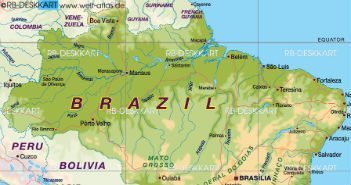Brazil’s mobile market ended April with almost 2.5 million LTE connections. Although the total LTE base is still relatively small (less than 1% penetration), LTE use has been increasing, with record growth last month. Led by Claro, which added 177,000 new LTE connections in April, the market grew 16.71% compared to March. Vivo added 114,800; TIM added 69,700 and Oi 28,100 LTE connections. Brazil’s total mobile base reached 273.6 million connections, dominated by prepaid customers (77.35%) and GSM, which represented 53.49% of the total.
Technology evolution in Brazil
| January | February | March | April | |
| GSM | 157,558,379 | 154,033,719 | 150,479,277 | 146,343,016 |
| WCDMA | 97,839,346 | 101,407.992 | 105,402,214 | 109,054,231 |
| M2M | 8,378,402 | 8,482,281 | 8,668,772 | 8,823,492 |
| Broadband data accesses | 6,990,298 | 6,957,870 | 6,936,963 | 6,866,253 |
| LTE | 1,566,362 | 1,822,026 | 2,077,647 | 2,494,324 |
| CDMA | 20,454 | 19,375 | 18,603 | 17,651 |
Ecuador also released telecommunications numbers, with the countries total Internet service penetration rate hitting 66% at the end of last year, including both fixed and mobile Internet connections. As for mobile connections, the penetration rate hit 111.2%, with a total of 17.5 million lines. 
700 MHz auctions in Peru, Brazil — Peru’s minister of communications and transport said that the country’s 700 MHz spectrum auction will occur this year. It will complement last’s year AWS (1.7/2.1 GHz) auction. The goal is to reach 234 municipalities within four years.
- In Brazil, there’s ongoing discussion over whether LTE will interfere with TV broadcasting services on the 700 MHz band. Brazil’s Society of Television Engineering voiced concerns that interference between LTE and DTT could cause disruption in programming, such as frozen images or blank screens.
Spectrum return — As part of gaining approval for their merger, Colombian state telecom operator UNE and Millicom’s Colombian unit Tigo will have to return 50 megahertz of spectrum. Together, they own 135 megahertz in the AWS band, while the Colombian spectrum cap is 85 megahertz. The carriers have eight months to choose which spectrum will be returned and two years and four months to complete the return. Colombia’s regulator for industry and commerce, SIC, had already called for the spectrum return, but the carriers appealed. With its most recent decision, the SIC confirmed that the carriers had to return spectrum.
More news from Latin America:
- Cable & Wireless Communications’ business in the Cayman Islands, Lime, has completed the roll-out of its new LTE network. The network was installed by Ericsson as the sole supplier, covering 100% of the islands.
- Chile reached 2.11 million ported fixed and mobile numbers since the mobile number portability system was launched in January 2012.
- AT&T’s offer to buy DirecTV for $48.5 billion will impact Latin American business. DirecTV is the biggest pay-TV provider in the region with 18 million subscribers in Central and South America.
- Oi recently released a material facts about the combination of Oi, Portugal Telecom SGPS S.A. and TmarPart.
- NII Holdings is said to be looking at establishing a mobile virtual network operator service for its Chilean unit, Nextel.
- Telefónica plans to invest nearly $1.8 billion to develop its operations in Peru between 2014 and 2016. The company’s investments will mainly focus on infrastructure deployment and service expansion across the country.
Wondering what’s going on in Latin America? Why don’t you follow me on Twitter? Also check out all of RCR Wireless News’ Latin American content.

